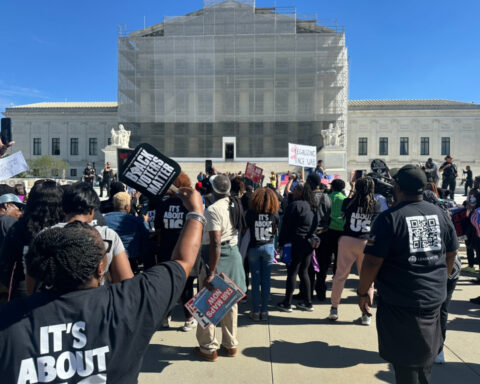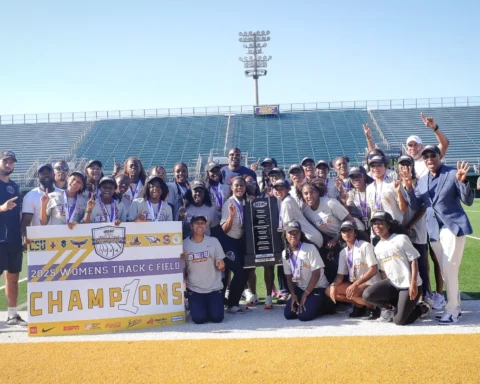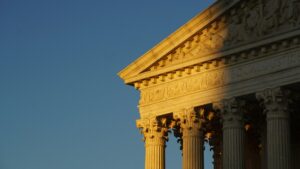A Blooming Community
Where did Fairlawn get its name, many may wonder? Adolphus Gude, a florist, owned much of the land many years ago. He used a lot of it to grow flowers for his business. Gude was the one to name the community Fairlawn .
Today, many homes, churches, and businesses are located where the flower gardens once grew, Patricia Jones, Treasurer and Chairman of the Education Committee of the Fairlawn Citizens Association explained. Location
The Fairlawn Community’s boundary starts at the eastern end of the Sousa Bridge on Pennsylvania Avenue, S.E. From there it continues to 25th Street S.E., then uphill and southbound on 25th Street to Naylor Road. At Naylor Road, the boundary continues uphill and south, past the Skyland Shopping Center, to Good Hope Road S.E. The boundary turns northwest on Good Hope Road all the way to Martin Luther King Jr. Ave S.E. and the base of the 11th Street Bridge; bordered to the west by historic Anacostia, and to the north by the Anacostia River.
Jurisdiction: Advisory Neighborhood Commission (ANC) 7B01, 7B03, 8A01, and 8A02.
History
Jones, who has been a resident of Fairlawn for 42 years, explained that she moved into the Fairlawn community in 1966 to an apartment on 17th Street S.E., near Anacostia High School. In 1968 she relocated to a home in the 2000 block of T Street S.E. and has resided there ever since.
She explained that one of the first institutions built for orphans was the German Orphan Home constructed in 1879. The orphanage was built for the care and welfare of children on a 10 acre tract of land at 2300 Good Hope Road S.E.
“The home included a farm and was only for white children at least three years old, but not over 11 years old,” Jones said.
“I remember the German Orphan Home and the Ruppert Home property on Good Hope Road. The German Orphan Home was abandoned and eventually burned down,” she recalled. Congress appropriated half of the purchase price of the land and the orphanage was expanded to 32 acres. In 1900, Christian Ruppert bequeathed money to the German Orphan Home with the stipulation that four and a half acres of land be set aside for the establishment of the Christian and Eleanora Ruppert Home for the Aged and Infirmed.
Jones explained that this information can be found in more detail in the book, “The Anacostia Story: 1608-1930” by Louise Daniel Hutchinson.
Hutchinson, who is also an Anacostia resident, gave publishing rights to the Smithsonian Institution Press in 1977 for the Anacostia Neighborhood Museum
Jones went on to explain that the Ruppert Home was built in 1902 next to the German Orphan Home and provided shelter and care for persons that were otherwise financially incapable. These two establishments are no longer on the sites.
Now, there are two large high-rise apartments known as Marbury Plaza, where the German Orphan Home once stood. A sub-community of 21 new detached single family homes is now located on the Ruppert Home site.
The Fairlawn Mews, which is located on Young Street S.E., overlooking Anacostia Park is another housing development in the Fairlawn area.
Some of the historical landmarks in the Fairlawn community are portions of L’Enfant Square, at Minnesota and Pennsylvania Aves S.E., The Anacostia Public Library, Fairlawn Park, and Anacostia High School.
Public Schools
Orr Elementary School located at Minnesota Ave and 22nd St S.E., Kramer Middle School located on Q Street, between 16th and 17th Sts SE, and Anacostia Senior High School which can be found at 16th and R Streets S.E., are some of the public schools in the area.
Business and EconomicsFrom an economic standpoint there are a number of planned projects slated for Fairlawn. One of them is a new building for the District Department of Transportation‘s headquarters (DDOT) which will tentatively be located at the intersection of Martin Luther King, Jr. Avenue and Good Hope Road.
The 2300 block of Pennsylvania Ave S.E. may also undergo some changes, as a new five story apartment building is being planned for that area.GovernanceFairlawn spreads across both Wards seven and eight. The D.C. City Council representative for ward seven is Yvette Alexander and the ward eight representatives is past District Mayor, Marion Barry.The ANC representatives are Linda Ekles who covers ANC 7B01; L.Yvonne Moore who covers ANC 7B03; Anthony Muhammad who represents ANC 8A01; and Barbara Clark who is responsible for ANC 8A02.The Fairlawn Citizens Association is the neighborhood association. Founded in 1966, the association has monthly meetings the third Tuesday of every month at 7 p.m., except in the months of July and August.
Meetings are held at the United Planning Organization‘s (UPO) Anacostia Service Center located at 1649 Good Hope Road, SE, in Washington D.C. Mrs. Thelma E. Jones is currently the President of the Fairlawn Citizens Association.
AccessibilityThe Fairlawn neighborhood is served by the Anacostia Metro Station at Martin Luther King Jr. Avenue and Howard Road, which is on the green line. The neighborhood is also served by several Metro buses, namely the M6, U2, V5, W6, W8, 32, 34, 36 and 92 routes.Community Outreach
Currently, the Fairlawn Citizens Association offers college scholarships to individuals who live within the boundaries of the community, and meet the eligibility requirements. These scholarships are intended to provide financial support to high school students pursing higher education. Presently, those awarded the scholarships are given $750 per year for a maximum amount of $3,000 per student.
To be considered for the scholarship the applicant must: live in the boundaries of the Fairlawn community have a parent or guardian who has been an active member of the Fairlawn Citizens Association
For at least one year prior to applying for a scholarship have at least a 2.5 grade point average on a 4.0 scale be a current high school senior planning to attend an accredited two or four year college or university program; and have a need for financial assistance.










